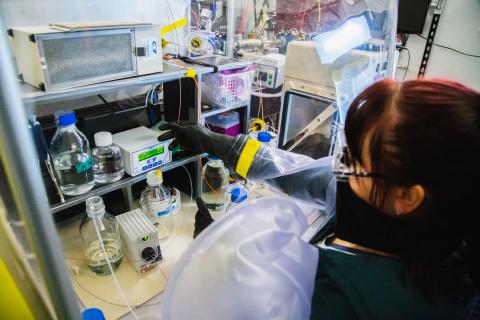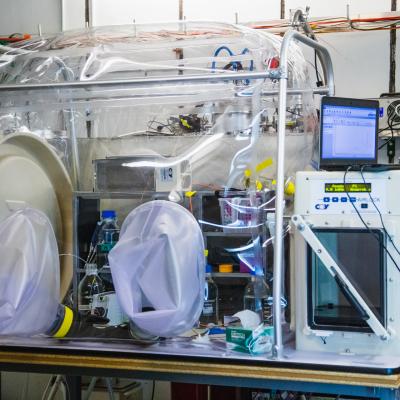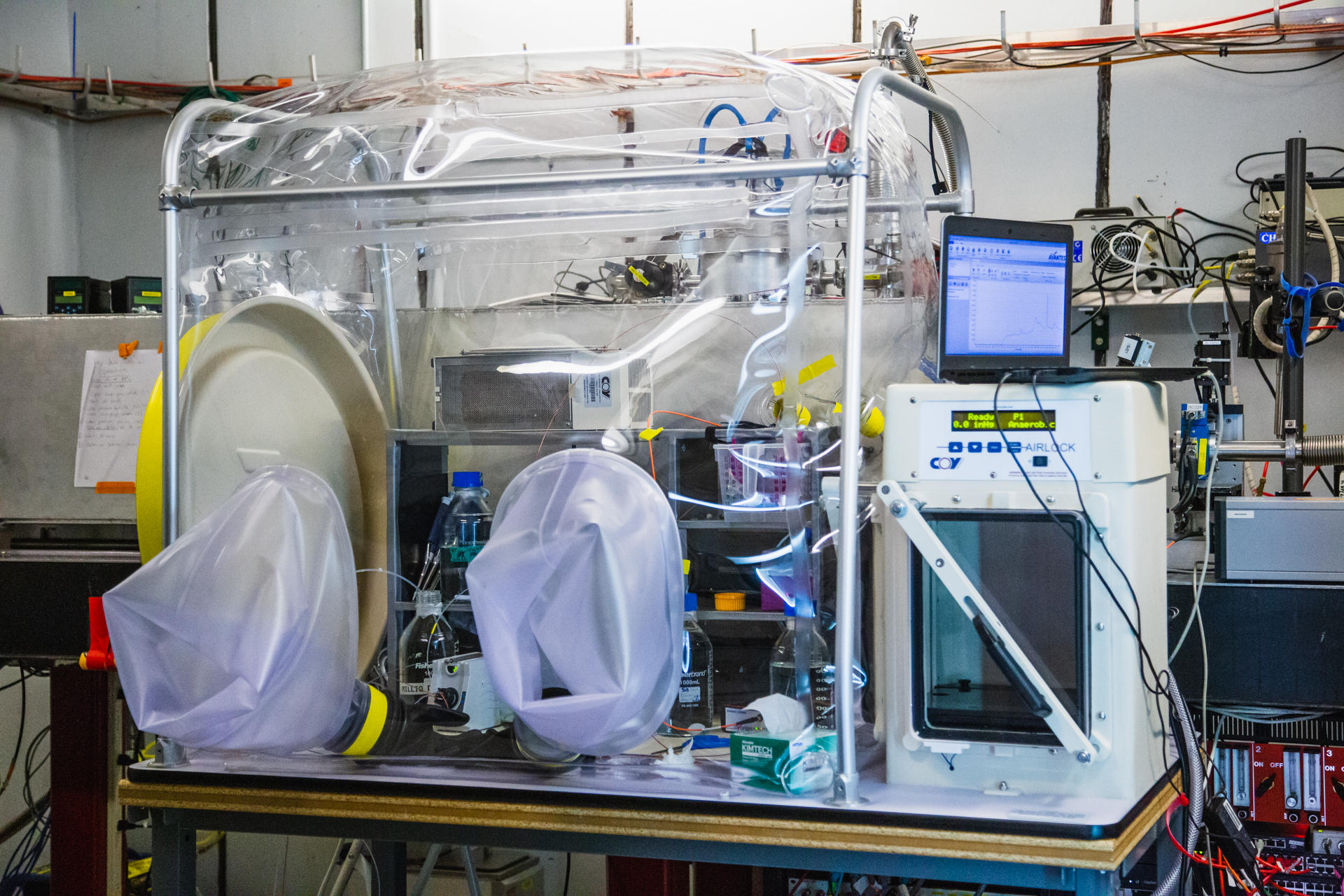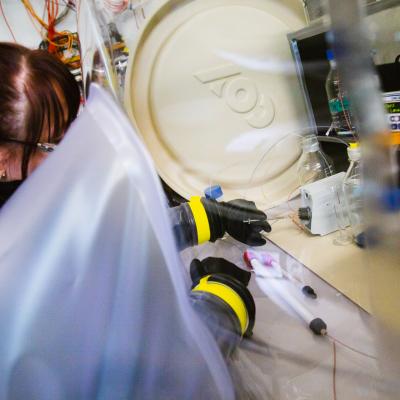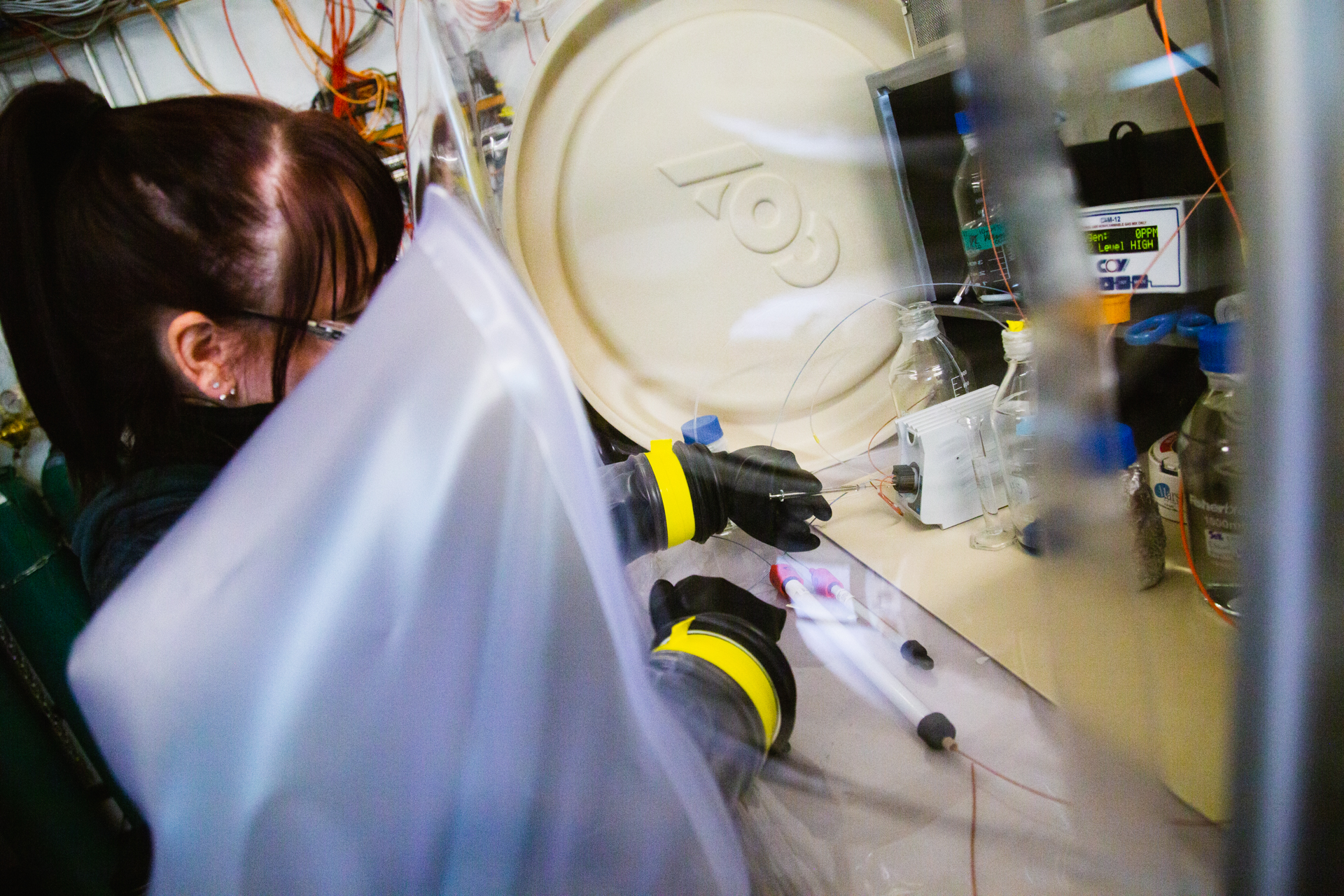CHESS is well known for experimental versatility and method/instrumentation development, and we have a user base that is interested in anoxic capabilities. A method to allow structural study of these systems will open many avenues of research, and the MacCHESS/CHEXS beamline 7A1 is the only beamline in the world known to offer this capability.
Motivation
Scientific interest in oxygen sensitive metalloenzymes and obligate anaerobes, due to their evolutionary and physiological significance, has motivated development of experimental capabilities to provide a stringent anaerobic environment for BioSAXS sample preparation and in-line data collection.
Previous small angle X-ray scattering (SAXS) set-ups did not allow for stringent anaerobic in-line sample injection, it was either one or the other. In the past, anaerobic SAXS (anSAXS) experiments have been performed using two methods: 1) non-stringent (>100 ppm oxygen) with in-line sample injection and 2) stringent (<10 ppm oxygen) static capillary SAXS. Until now, in-line low oxygen (<10 ppm) anSAXS was unobtainable.
Development of Stringently Anaerobic In-line SAXS
With the recent anaerobic COY chamber installation into CHESS ID7A1, samples can now be prepared and injected directly into the sample path, while remaining in a < 5 ppm oxygen atmosphere throughout the experiment. As this COY chamber is large enough to accommodate chromatography equipment, chromatography coupled anSAXS is now feasible. This newly expanded capacity to prepare and inject samples directly into the sample path will allow analysis of oxygen-sensitive systems which may not be stable through capillary transit, such as certain metalloenzymes. Furthermore, real-time experimental changes, such as adjusting concentration and performing time-sensitive titrations, can be easily accommodated with this new experimental set-up.
Why did this research need CHESS?
CHESS is ideally located at Cornell University, allowing technique development projects to involve students at all levels, from undergraduate to post-doctorate. It is an exceptional learning environment that allows interdisciplinary work to thrive. Furthermore, the bioSAXS beamline 7A1 has been equipping itself to study proteins in extreme environments such as high-pressure or high-temperature, which are hypothesized to be the conditions of the origin of life on Earth. Anaerobic SAXS is a natural complement because many of these extremes are devoid of oxygen as well.
Broader Impacts
CHESS is well known for experimental versatility and method/instrumentation development and we have a user base that is interested in anoxic capabilities. From the gut microbiome to the depths of the ocean, life has evolved to thrive in the absence of oxygen. In fact, it is not hyperbole to say that life as we know it would not exist without the oxygen sensitive metalloenzymes that we all rely on. A method to allow structural study of these systems will open many avenues of research, and CHSX beamline 7A1 is the only beamline in the world known to offer this capability.
How was the work funded?
This work is performed at the Center for High Energy X-ray Sciences (CHEXS), which is supported by the National Science Foundation under award DMR-1829070, and the Macromolecular Diffraction at CHESS (MacCHESS) facility, which is supported by award 1-P30-GM124166-01A1 from the National Institute of General Medical Sciences, National Institutes of Health, and by New York State’s Empire State Development Corporation (NYSTAR). Also, by NIH award R35-GM12484 and by NSF Graduate Research Fellowship award DGE-1650441.
